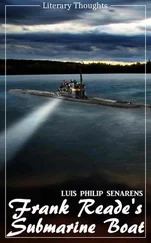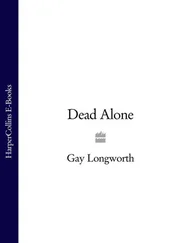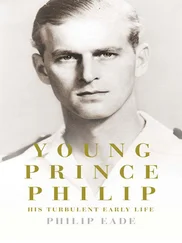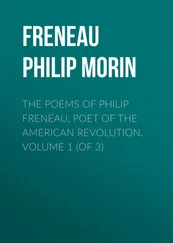Soviet leaders had long since abjured Stalinist methods, so Romania was given sufficient latitude to thwart COMECON plans for economic integration. However another — voluntary — approach was to achieve limited success. By 1976 COMECON had promoted specialization in machine-building, created a large pool of railway rolling stock, and built a gas pipeline through the Bloc. It had also founded a joint nuclear research institute, a Bank for Economic Co-operation and had set up organizations to modernize the region’s steel industries and to co-ordinate the manufacture of ball-bearings and chemicals. The fact that the headquarters of these new organizations were allotted to Budapest, Warsaw and East Berlin, rather than being retained in Moscow, mirrored EU practice and suggested that the dirigiste character of the Bloc had given way to a freer form of cooperation.
As for Romania, it continued to find occasion to defy Moscow. It was an effective way for leaders to advertise their patriotism to a population most of whom either resented Communists or were politically innocent. Unlike Czechoslovakia, Romania escaped punishment for stepping over Moscow’s line, but then it did not border a NATO state and it remained stable internally under the oppressive Ceausescu. It is curious, however, that after thirty years of Communism the economic pecking order of the East European countries was the same as it had been half a century, and indeed a century, earlier. The richest countries, in terms of average income per head, were still Czechoslovakia and East Germany; and the poorest were still Albania, Romania and Russia itself.
By 1970 the Soviet Union matched the United States in the number of intercontinental ballistic missiles deployed. The balance of nuclear power had reached the point of perfection. In these circumstances neither side wished to risk their use for fear of reprisal, and both now moved towards detente and to limiting the spread of nuclear weapons to other states. Anticipating this change in strategic circumstances, in 1969 both sides signed a Nuclear Non-Proliferation Treaty, and talks began on Strategic Arms Limitation. 29Only China, jockeying for a better position in the race for world power and trying to seize leadership of the Communist movement from the Soviet Union, objected vehemently both to detente and to the Brezhnev Doctrine, viewing them as breaches of Marxist principle. Ideological purity had only ever had brief tenure in the Kremlin. Indeed, reasons of state had long since tended to shape the ideological line that Moscow laid down.
Despite detente, however, competition between the Soviet Union and the USA continued. During the 1960s Moscow’s influence in Africa had waned. The ousting of Kwame Nkrumah in 1966 meant the loss of Ghana as a client; Soviet influence in the Middle East diminished sharply after Egypt’s defeat in the Six-Day War with Israel in 1967; and after Nasser died in 1970, Egypt ceased to be an ally. Yet Soviet influence in other regions grew. Concern about Washington’s courtship of Pakistan and fear of China prompted an intensification of relations with India. This culminated in a treaty of considerable strategic significance signed in 1971. It made port facilities available to Russian ships at Bombay, Goa, Cochin and the Andaman Islands, and opened up an air corridor for Soviet aircraft from Tajikistan in Central Asia down to the Bay of Bengal. 30The Soviet Union thus became a power in south Asia and the Indian Ocean.
At the same time Moscow was securing new allies on the very doorstep of its Marxist rival, China: North Korea and North Vietnam. It gave the latter significant economic and diplomatic support for its fight against the US-backed regime in South Vietnam, but gauged it carefully so as not to disrupt detente with Washington. But economic aid and a model of development that seemed more effective than market forces were not the only attractions that won new allies and friends. The Soviet Union represented an opposite ideological pole to the United States and, as such, exerted an attractive force around the world. So it was that not only Ethiopia, Angola and Mozambique aligned with Moscow, but close ties were developed with the Chile of Salvador Allende.
Competition in some parts of the globe contrasted with detente in Germany, however. In 1970 Moscow granted recognition to the Federal Republic of Germany in response to friendly overtures from its leader, Willy Brandt — a development which helped to change the tone of East—West relations in central Europe from confrontation to co-operation. In Asia, however, as in Africa, competition remained the norm, and it was to become particularly fierce over Afghanistan. Russia had been anxious to secure a position there since the later nineteenth century, in order to insulate and secure her territories in Central Asia against attack and gain a lever in southern Asia. This interest was to be maintained. As early as 1927 Soviet engineers had begun work on a road through the Salang Pass over the high Panjshir range to link Samarkand and Dushanbe with Kabul, but the project had been thwarted by the Afghani revolt in the following year. Progress was resumed in the 1950s, when Moscow provided aid to develop the country’s communications infrastructure by building bridges, roads and an airport at Baghram in the east of the country, on the route to Kandahar. In this fashion the Soviet Union had built a dominant influence in Afghanistan and a strong position in the heights of Asia, with access to both friends and potential enemies to the south. The position was not yet impregnable, however. In September 1979 Hafizullah Amin was to stage a bloody coup in Kabul and prepared to switch sponsors. This prompted the Kremlin to order intervention. Soviet special forces stormed the presidential palace and, after heavy fighting took it, killing Amin in the process. A Communist, Babrak Karmal, became president, and Afghanistan changed its status from protege to satellite. 31
The Kremlin had been helped in the immediate post-war era by the prestige it had won in the Second World War, by the worldwide ramifications of the Communist Party, and by the effectiveness of its intelligence service. The Soviet spy network had succeeded in penetrating the secrets of the ‘Manhattan Project’ at an early stage, thanks to agents like Klaus Fuchs and Alan Nunn May in Britain and Theodore Hall and David Greenglass in the United States. At the same time the celebrated and notorious ‘Cambridge Five’ (Philby, Maclean, Burgess, Blunt and Cairncross) had penetrated the British Foreign Office and security agencies, including MI5, SIS and SOE. This had allowed them to convey essential information not only about the atom bomb, but about other weapons, codes and ciphers, and top-level political and military intelligence. 32The idealism which led so many brilliant young people to serve what they took to be the cause of Communism rather than their own countries was a major asset to Soviet intelligence. It gave the Kremlin significant advantages from the later 1940s, and was probably decisive in eliminating the scientific and technological gap between the Soviet Union and the Western Powers so quickly. Yet the Soviet Union was not devoid of native dynamism in these areas.
Apart from the occasional quack, like Stalin’s protege the geneticist Lysenko, it made use of many scientists who were leaders in their fields. They included the famous biochemist Aleksei Bakh, the ground-breaking physicist Petr Kapitsa, the aircraft designer Andrei Tupolev, and the inventor of the best small arms in the world, Mikhail Kalashnikov. The roots of the first-rate Soviet scientific establishment stretched back through two centuries of Academy of Science traditions to the Enlightenment, and its fruits were to include the development not only of the first space ships and astronauts but of the first safe heart drug. But for a strange accident at a Paris air show, when another aircraft on an unauthorized flight crossed the flight path of a prototype Tupolev supersonic airliner, causing it to crash, the Soviet Union might also have led the world in commercial supersonic intercontinental flight services. Yet the great sophistication in science and technology coexisted with simple forms of collective human life which had changed little with the passage of centuries, and the Soviet regime’s concern to ‘civilize’ native peoples stemmed from the same burning sense of mission that had fired missionaries everywhere.
Читать дальше





![Stephan Orth - Behind Putin's Curtain - Friendships and Misadventures Inside Russia [aka Couchsurfing in Russia]](/books/415210/stephan-orth-behind-putin-s-curtain-friendships-a-thumb.webp)





